Friday Dec 26, 2025
Friday Dec 26, 2025
Thursday, 9 December 2021 00:00 - - {{hitsCtrl.values.hits}}
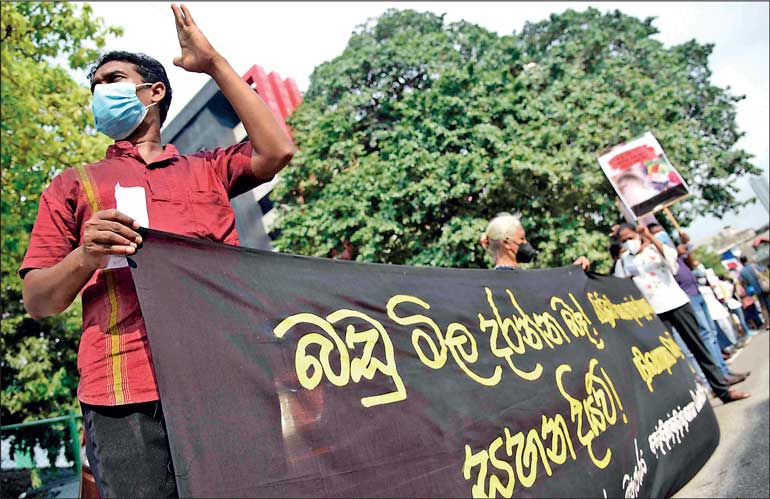
We’ve had power cuts before, but never power cuts, water cuts, shortages, exploding cookers, queues, shrivelling harvests, skyrocketing prices and an exodus of middle-class Sinhala youth. It is a cluster of multiple malfunctions – Pic by Shehan Gunasekara
|
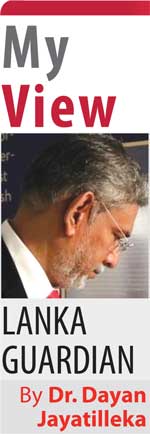 Sri Lanka is hit not only by COVID by also by President Gotabaya’s policies—which is why the peasants are cursing the policy not the virus, and lamenting their 2019 vote, while youngsters are running away from this country to other countries with COVID.
Sri Lanka is hit not only by COVID by also by President Gotabaya’s policies—which is why the peasants are cursing the policy not the virus, and lamenting their 2019 vote, while youngsters are running away from this country to other countries with COVID.
Given the probability of socioeconomic meltdown triggered by the collapsing harvest, the year 2022 is shaping up as the Year of Revolution and/or Counter-Revolution. A pre-emptive counter-revolution could trigger a revolution (as the Aquino assassination triggered the democratic revolution and the ouster of Marcos) or the revolution could trigger the counterrevolution (with Tahrir Square culminating in the Al Sisi ascent).
But what kind of Revolution and what kind of Counter-Revolution could it be? Do we need either Revolution or Counter-Revolution, or do we need Reason, reform, consensual crisis-management and stabilisation instead?
Rational reforms should meet the criterion of retarding, not accelerating, either revolution or counter-revolution. They must reduce social polarisation, ensure social consensus and political stability, not merely economic ‘stabilisation’—because certain kinds of ‘stabilisation’ packages may make arithmetical sense, but would trigger political and social de-stabilisation which will set the economy ablaze.
Constitutional ratios
We’ve had power cuts before, but never power cuts, water cuts, shortages, exploding cookers, queues, shrivelling harvests, skyrocketing prices and an exodus of middle-class Sinhala youth. It is a cluster (you’ve got it!) of multiple malfunctions. One major reason is the lack of dialogue with the trade unions and peasant unions.
This was never the case with the SLFP. There’s the famous story of S.W.R.D. Bandaranaike negotiating with striking unions in the lamplight because the electricity workers were on strike. Chandrika Bandaranaike Kumaratunga led a peasant struggle in Monaragala against multinational agribusiness. Mahinda Rajapaksa famously negotiated a Workers’ Charter.
Gotabaya Rajapaksa was never socialised in the political culture of the SLFP which his father co-founded, but one doesn’t have to be a leader from an SLFP background to negotiate with unions. Rusiripala Tennakoon, former Head of the Bank Union, would testify to the employees’ relationship with President Premadasa, which thwarted Milinda Moragoda’s proposals for privatisation and labour sector ‘reform’.
President Gotabaya Rajapaksa made the same mistake as the gas companies seem to have done with the changed ratio of gases. The overwhelmingly greater percentage of his votes came from Mahinda Rajapaksa supporters, because of Mahinda Rajapaksa, but when the 20th Amendment was moved, GR shifted power to the presidency to an extent that did not correspond to that reality. Mahinda Rajapaksa was reduced to a PM “with the powers of a peon”. Therefore, he could not, cannot, negotiate successfully with the unions—though he did so on the major issue of the teachers and principals salaries—because he no longer has the clout or the real-estate.
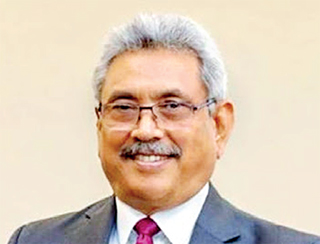 |
| President Gotabaya Rajapaksa |
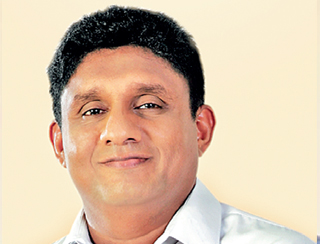 |
| SJB Leader Sajith Premadasa |
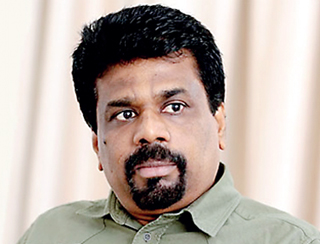 |
| JVP Leader Anura Kumara Dissanayake |
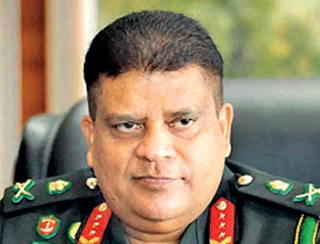 |
| Army Commander General Shavendra Silva
|
JVP is no answer
There seem to be at least two radical ‘system change’ options emerging, one from the radical left the other from the radical right; one from below, the other from above. Neither will solve the crisis and both of which will exacerbate it.
The first is open, transparent, declared and legitimate, though wrong-headed. That is the JVP-NFF option, with Anura Kumara Dissanayake at its head, and extra-parliamentary peaceful mass struggle as its method. On a TV panel discussion recently, Wasantha Samarasinghe, the Deputy Leader of the JVP Trade Unions, stated in reply to a question from the panel of journalists, that the JVP has no intention of opening a discussion with the main parliamentary Opposition party the SJB. It’s a unilateralist project with some fellow-travellers and front organisations.
The JVP has certainly cleaned up its act, but I would doubt its ability and suitability to manage the Sri Lankan crisis. It fails to pass two crucial tests.
Firstly, it hasn’t tested its model out in a single provincial council or even a major mayoralty. It shared power with Chandrika Bandaranaike Kumaratunga’s SLFP for a brief period but pulled out early in Mahinda Rajapaksa’s first presidential term while the war was still raging.
Betting on it simply because one is desperate for change would be similar to voting for Gotabaya Rajapaksa in 2019 for the same reason or impulse. The JVP’s national programs and assemblage of educated professionals is a red version of Gotabaya 2018, the Shangri-La and Viyath Maga. The only thing that’s different is that the TV station doing the hype is different.
Secondly, there’s the litmus test of policy. If anything needs reform to jump start Sri Lanka’s road back to fulfil its potential to the fullest, it is in the interrelated spheres of education and English-language literacy. So far, the JVP has refused to take a stand against ragging and make a pledge to stop it. It has not pledged to speedily introduce the teaching of English from the primary school or pre-school level (as has Sajith Premadasa in his November 2019 presidential campaign). Indeed, its commitment to teaching English is hazy and hedged. While I concur with the JVP and FSP in its resistance to the expansion and exaltation of the KNDU, it has yet to unveil a program for the reform and modernisation of the island’s education system.
When I was a senior research fellow at a think-tank of the National University of Singapore (NUS), I learned that the faculties of law and medicine in Singapore’s higher education system had been founded by Ceylonese. Such was the excellence of our island’s educational system. If we have been unable to take the smallest steps to restore that excellence, the main obstacle for the longest time has been the obstructionism of the JVP. That has not changed.
To recap, there are three routes for the JVP to go before it is eligible for the top spot.
1. Become the main Opposition as did the LSSP in 1947-1956 and again in 1960.
2. Be a responsible, durable, progressive partner in a coalition with a centre-left or centrist party/leader, i.e., what it could have been when Premadasa offered it three portfolios in 1989 and later when it served briefly in a cabinet under CBK and MR.
3. Become the governing party of a Provincial Council, win the Chief Ministership and do a Kerala.
If the growing crisis tempts it into making an extra-parliamentary/extra-electoral lunge for power at the national level, skipping any and all of these intermediate stages (as usual), it will be disastrous for the country if successful, and disastrous for the JVP anyway.
Militarisation of agriculture
As someone who read Marxism even before hitting my teens, I can always recall one of the so-called ‘law of dialectics,’ namely the transformation of quantity into quality, e.g., the increase of heat leading to a qualitative transformation from liquid to steam. In Sri Lanka today or rather, tomorrow, how long will it be before the increase in quantity turns into quality?
The process I refer to is that of militarisation, driven by the ideology of militarism. President Gotabaya Rajapaksa just made a leap:
“President Gotabaya Rajapaksa has decided to establish a ‘Green Agriculture Operative Centre’ to systematically and sustainably fulfil the priorities identified to make Sri Lanka a ‘green’ country. This is being implemented under the direction of the Chief of Defence Staff and Commander of the Army General Shavendra Silva, the President’s Media Division (PMD) said in a statement.” (President sets up Green Agriculture Operative Centre | Daily FT – https://www.ft.lk/front-page/President-sets-up-Green-Agriculture-Operative-Centre/44-727118)
“The President has given directives to ensure that this Operative Centre gives priority to a number of functions including:
1. The amalgamation of the Colombo Commercial Fertilizers Ltd. and the Ceylon Fertilizers Company Ltd. as the National Organic Fertiliser and Distribution Company,
2. Encouragement of production of solid and liquid organic fertilisers in accordance with standards, providing fertilisers free of charge to the farmers on time,
3. Fulfilling the fertiliser demand in the district, accelerating the production of paddy, maize and other grains, fruits and vegetables, promotion of quality seeds and seedlings suitable for green agriculture,
4. Coordination of all officials from the highest level to the ground level involved in agriculture, distribution of food crop products and the promotion of health education and communication programmes on organic food consumption.
5. The Operative Centre also should coordinate with the two Presidential Task Forces established to transform Sri Lanka into a Green Social Economy with sustainable solutions to climate change.
6. It is further responsible for organising the National Green Economy Council, which holds meetings once in every two weeks under the chairmanship of the President.”
(Ibid. My numeration – DJ).
The President clearly hasn’t learned his lesson, namely that the fertiliser-weedicide-pesticide policy was wrong and that he should have sought—and should always seek—the counsel of the most qualified minds in any subject before he embarks on something of such scale and consequence. Instead, the President has fallen back on his dangerously wrong doctrine—that he should do things with and through the military.
When President Gotabaya Rajapaksa talks of a ‘Green Economy,’ at a time when paddy fields are looking anything but lush green, and forests are being invaded by developers, the ‘green’ is basically in military fatigues.
I invite readers to ponder point (4): “Coordination of all officials from the highest level to the ground level involved in agriculture, distribution of food crop products and the promotion of health education…”
This puts the Operative Centre run by the Army Chief, above “all officials from the highest level to the ground level involved in agriculture”. This is a massive swathe of the public service. Since the ministerial secretaries are below the Army Chief, one wonders who is higher in the chain of command: the ministers, deputy and state ministers or the Army Commander.
All in all, the sweeping mandate given to the Operative Centre brings the Army Chief front-and-centre in the large sphere of rural agriculture.
Presidential-military rule?
The timing is curious but doubtless coincidental. After the dramatic SJB demonstration (16 November) in Colombo despite 500 Police roadblocks stopping an influx from without, the Air Force headquarters has inaugurated a command centre with multiple screens that provide a real-time panoptic view of the city. It has been announced that drones and helicopters will be used to “monitor city traffic” and instantly inform Police motorcycle units.
President Gotabaya Rajapaksa has been incrementally inducting the military, most conspicuously the Army Chief, into the running of national affairs. He has made the Army Chief the chieftain of much more than the Army. Where does this lead and where will it end?
Military science has operational concepts known as ‘theatre dominance’ and the ‘oil slick strategy’. The latter establishes a focus of control and then expands from it as an oil slick does so that finally all the oil slicks converge and cover the entire target area.
There is yet another operational principal known as the grid search pattern, where an area is divided into squares and each is systematically cleared.
A grid map of the Sri Lankan State will show that with President GR’s facilitation the military/ex-military bloc already ‘dominates’ the area of the State structure, which is being covered by expanding oil slicks of militarisation.
President GR and his hardcore supporters may perhaps find it problematic that though the military dominates, it has not cleared and held the whole of the State, still less society. If it is perceived by the military/ex-military bloc that the ‘uncleared areas’ are the problem in crisis-management, then these spaces will be targeted as the crisis approaches boiling-point in 2022.
Sri Lanka’s major problem is not an absence of system change, as superficial left radicalism would have us believe. It is that the system has indeed been changed by the Gotabaya regime, and is being changed by it as we speak, into something else; something fundamentally undemocratic and socially insensitive: a presidential-military autocracy.
For the past two years militarisation has taken place quantitively, but at some point the quantitative changes will cumulate and a qualitative change will result, as with water transforming into steam. How much more militarisation is possible before Sri Lanka finds itself changed into a system of presidential-military rule, i.e., what has long been defined in Latin America as a ‘civilian-military junta’, in which the President inducts the military into shared rulership?
There is a flip-side. How long before it dawns on the Quad that the competition with China in the strategically crucial Indian Ocean necessitates a high degree of systemic congruency and that a doctrinally Chinese-inspired ‘military-civil fusion (MCF)’ in the nodal location of Sri Lanka is an unacceptably risky degree of systemic asymmetry which requires re-balancing by restoration of the long-standing civilian-democratic system?
Moderate centre: Build back better
Neither the JVP under its current leadership (Lal Kantha is a far more mature Leninist realist than AKD) nor the more sincere, less sectarian and smaller FSP can deter or rollback military rule. Both formations have a theoretical and strategic blind-spot and are indifferent—as Marx, Engels, Lenin and Gramsci were not—to the decisive question of the character of a political regime, i.e., democracy or autocracy. To the JVP and FSP, it’s all capitalism (or the Open Economy). Furthermore, given its lack of international legitimacy and experience, the JVP cannot manage the crisis.
Managing the crisis and deterring/neutralising a military regime needs a combination of consistently democratic forces of a moderate-nationalist/patriotic, centre-left orientation, also acceptable to the military especially the Officer Corps. This means an alliance of the SJB, the SLFP, and SLPP dissenters.
Such an alliance in the form of the Yahapalanaya administration failed because the (Ranilist) UNP attempted to encroach on the directly-elected presidency, while its polarising policies narrowed the electoral base of the moderate centre which needed to be broadened.
The Wickremesinghe-Samaraweera co-sponsorship of the Geneva 2015 ‘foreign judges’ resolution and the (loosely linked) non-unitary constitutional draft, helped reduce the SLFP to a rump faction. Such a foreign relations move generates domestic polarisation rather than national consensus; wreaks electoral havoc on the party proposing it (UNP), the coalition undergirding it (Yahapalanaya), and the allied party (SLFP) exponentially expanding a new Opposition party (SLPP) and radical-nationalist backlash (GR) which overrun it. This isn’t said with hindsight, but was said with foresight in 2016. (290916 Dr. Dayan Jayatilleka at the panel discussion ‘Geneva & You’ – https://www.youtube.com/watch?v=XOsQJFtRY6U).
While the litmus test of the Gotabaya regime is how many would vote for GR rather than Sajith Premadasa if the exact same choice as in November 2019 were available today, the litmus test of the Yahapalanaya experiment (2015-2019) is which leading Yahapalanaya personality is there a greater public nostalgia for even at this very moment of intense, unprecedented unpopularity of an incumbent regime: Mahinda Rajapaksa, Maithripala Sirisena, Ranil Wickremesinghe, Karu Jayasuriya or Mangala Samaraweera?
Today, Wickremesinghe and the UNP are irrelevant, while the SLFP is not irreconcilably incompatible with the SJB led by Sajith Premadasa (with Sarath Fonseka as chairperson). It is a convergence that is feasible, could constitute a strong moderate centre, and manage the crisis in a manner that makes for stability without imposing it.